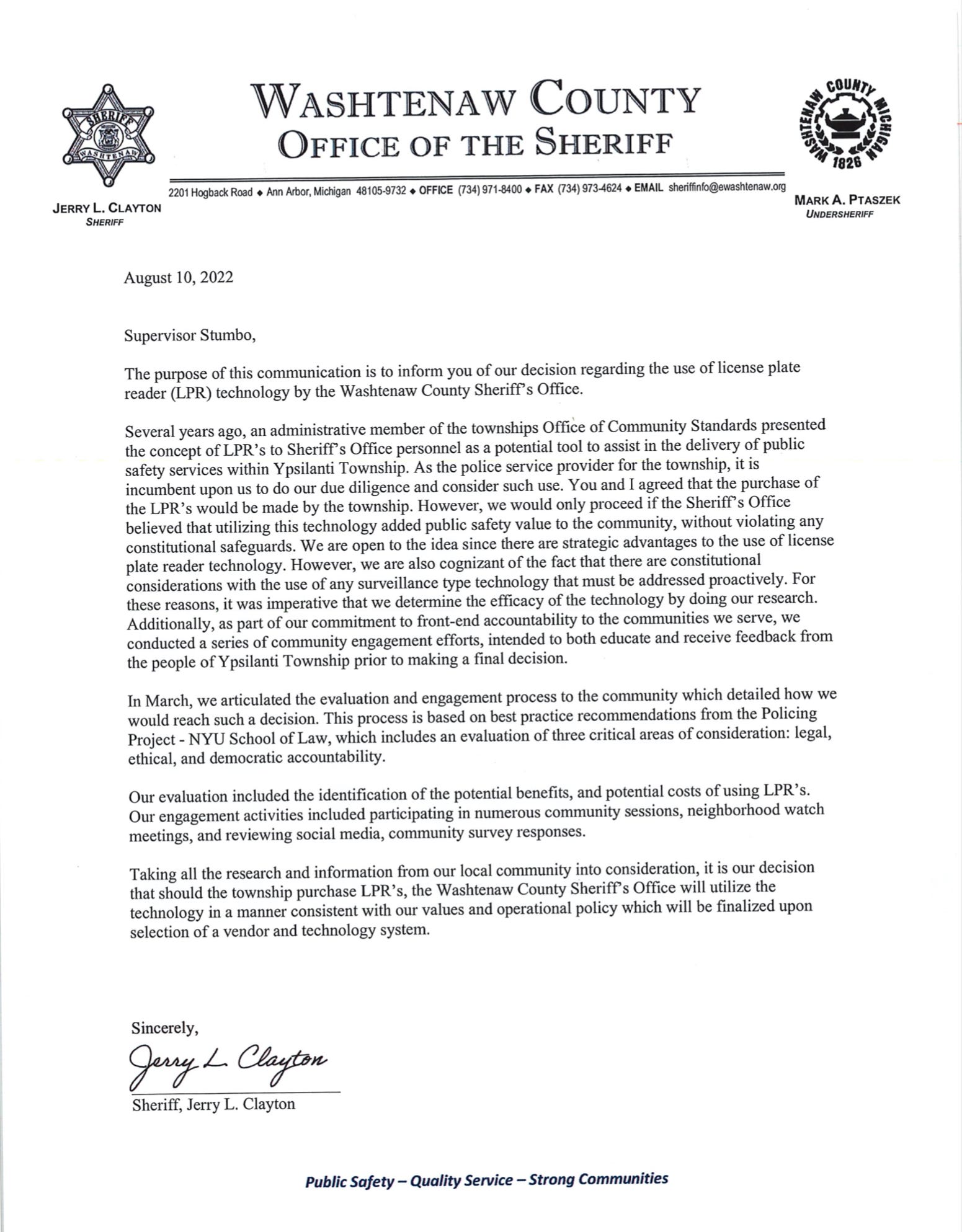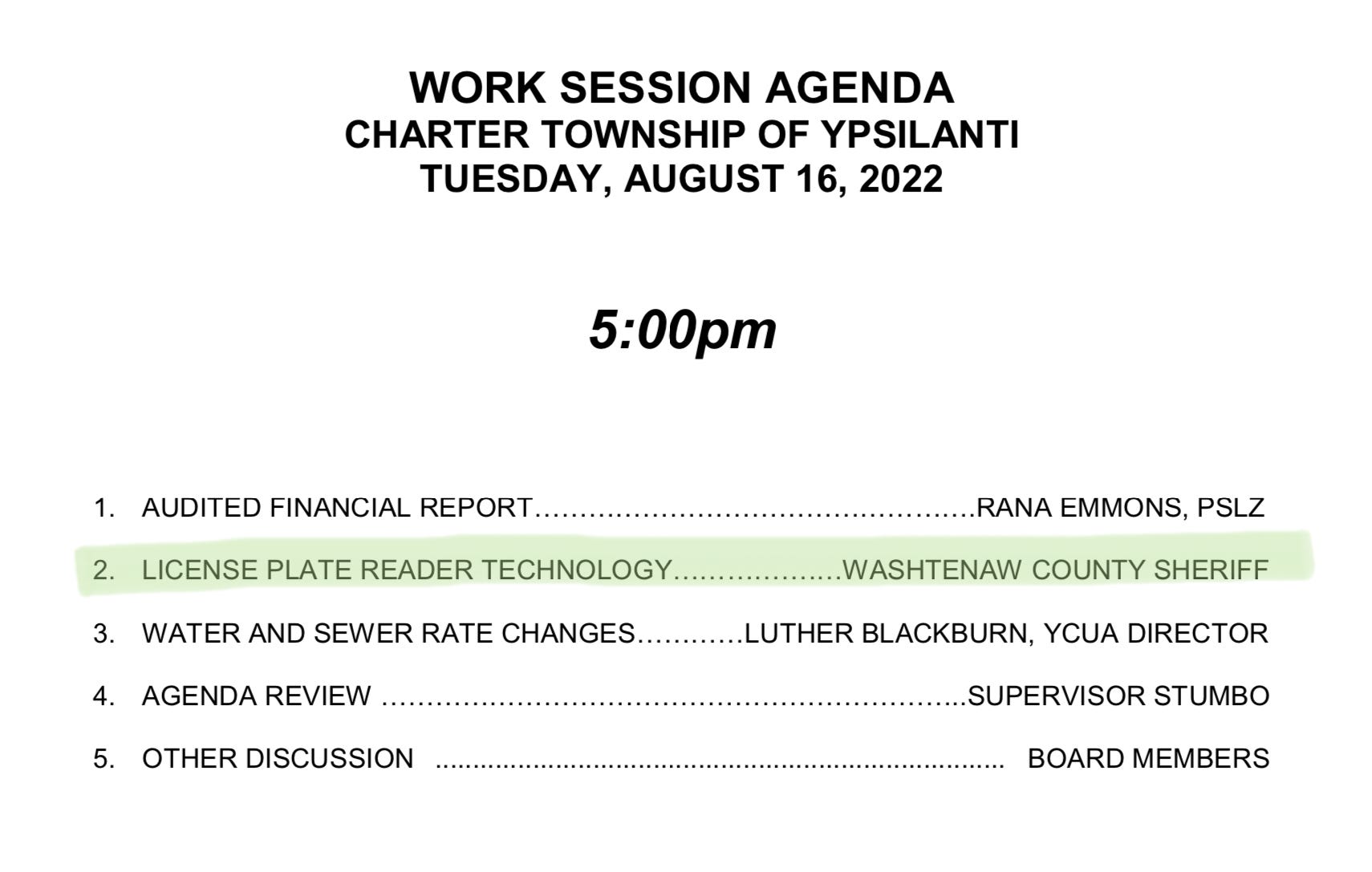Outreach Notebook August 14, 2022
Washtenaw County Coordinated Entry For Homelessness Calls Not Returned, Resources Have Been Same Dollar Amount for 10 years: Where Do We Go From Here?
Welcome back all to Outreach Notebook for August 14, 2022.
Today we will focus on the coordinated entry system in our county’s Continuum of Care [CoC] for people experiencing homelessness in our communities. For several months now, there has been a technology issue that prevented the current operator from returning all the calls made by residents seeking crisis housing assistance in one form or another.
People have been calling Housing Access for Washtenaw County [HAWC] at 734-961-1999, for about a decade or more, when literally houseless or when they are housing insecure, about to be evicted from housing due to lack of funds for rent.
Since April of 2022, there has been a backlog of calls due to “technological malfunction.”
The questions county staff and the CoC are wrangling with include:
- Who will operate HAWC starting in October 2022?
- Which CoC functions will they continue to serve?
- What will be the level of funding be for the new entity taking over coordinated entry?**
- What will be done to address immediate housing crisis needs of people who are housing insecure, who are without housing prior to this new agency taking over HAWC coordinated entry functions? [esp intake and referral]
**This question is being asked by the community [“community” here means community of housing agency providers]. County staff are seeking funds, but have no immediate budget lines they can commit. The comment has been made that they want to see what the program will be, what functions it will serve and *then* we will know what level of funding will be needed to effect those functions.
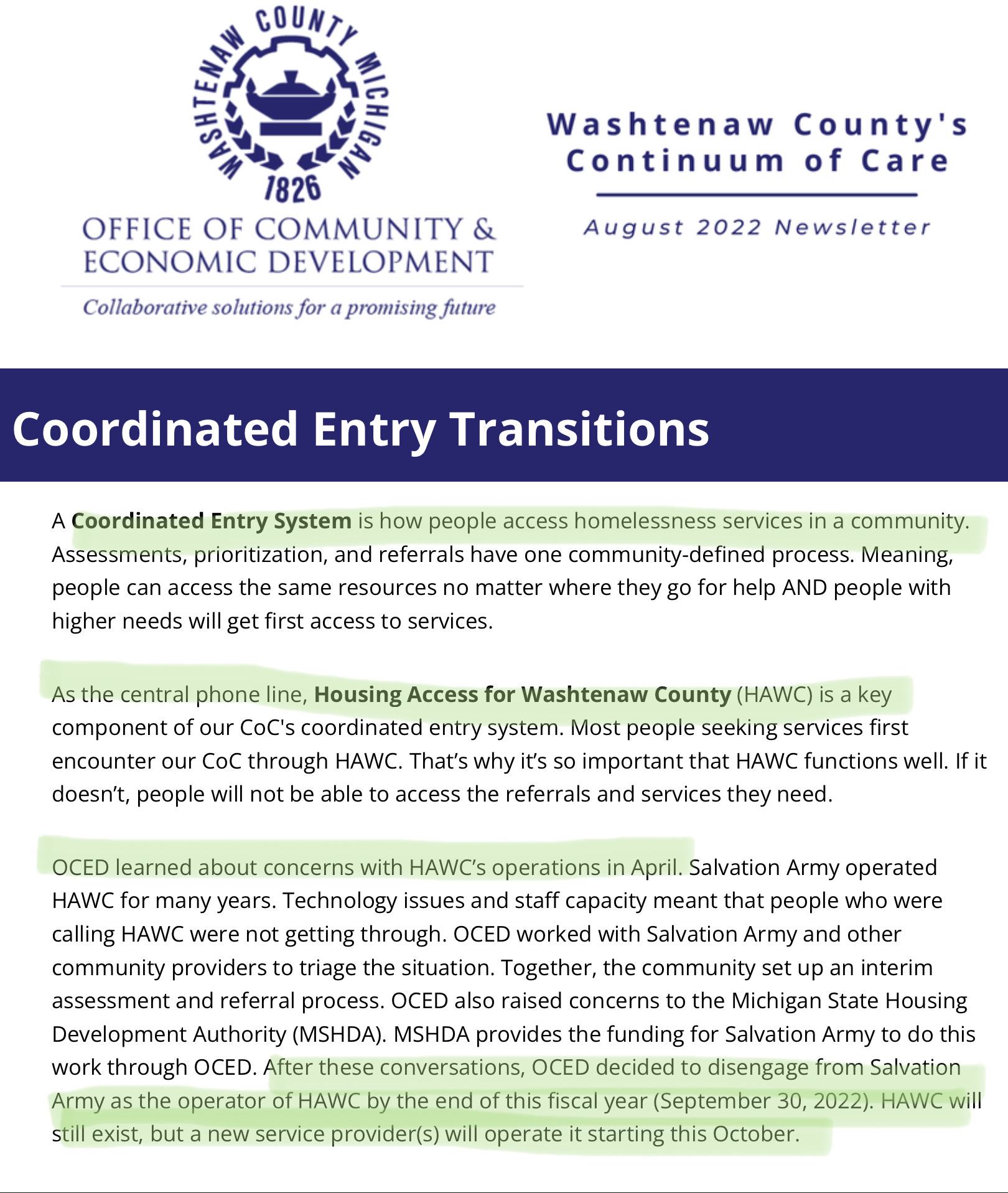
WASHTENAW COUNTY SHERIFF’S OFFICE REP POINTS ATTENTION TOWARD MUNICIPALITIES FOR HAWC FUNDING GAP
During a recent CoC board meeting [August 3, 2022], item #3 above…this question of funding, came up in terms of “if we don’t increase the resources going to HAWC, regardless who provides the services, we will continue to have unacceptable gaps in services.”
In response to Amanda Carlisle [Exec Dir Washtenaw Housing Alliance] raising this issue, Sheriff Representative Kathy Wyatt added a “plus one” and directed board members to seek out municipal leaders for additional sources of funding. The reason Kathy cites this is that instead of people finding emergency shelter or resources to maintain housing, they are ending up “at the Sheriff’s office” instead.
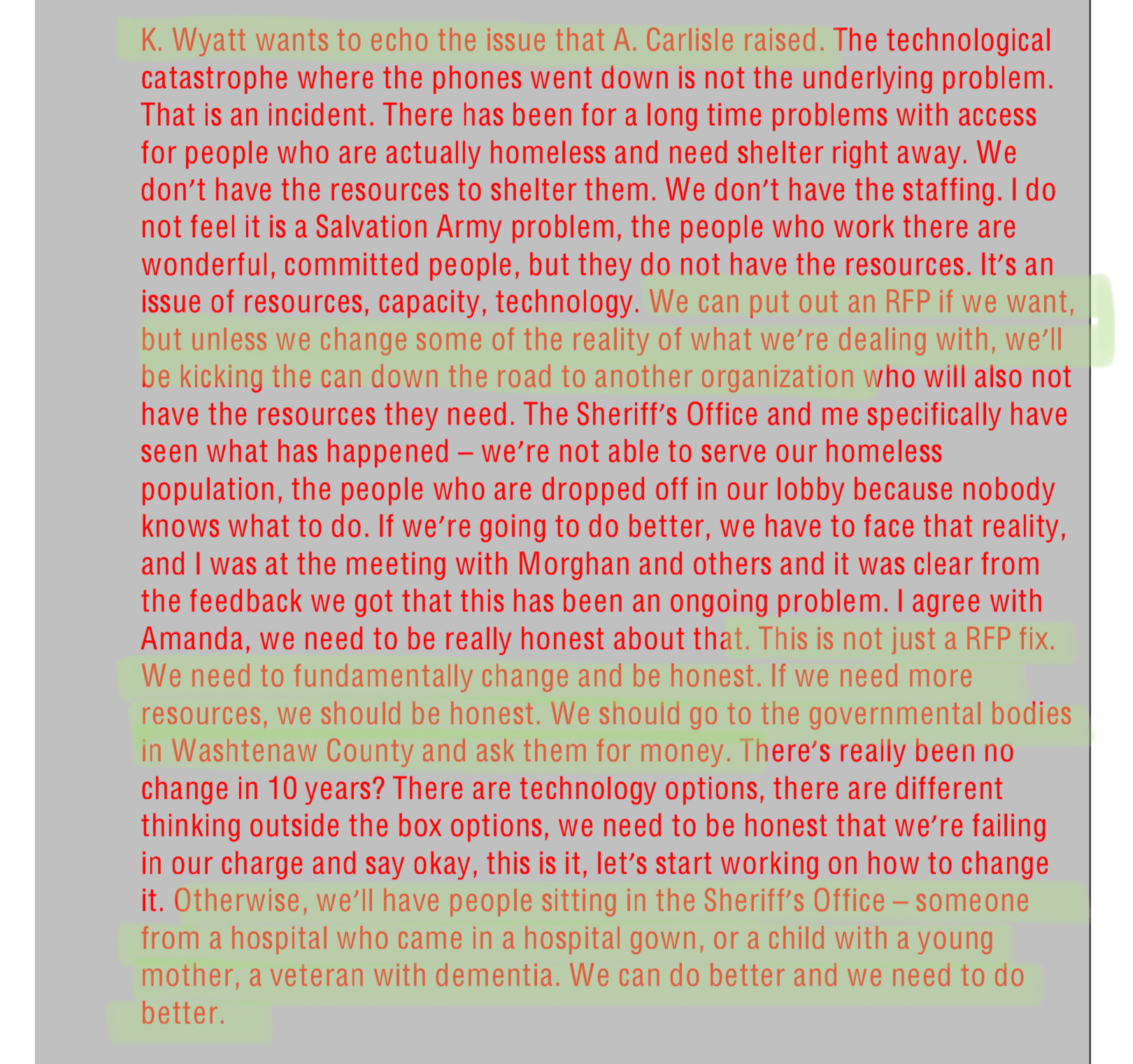
Perhaps *in addition* to seeking funds from municipal partners, we should also be seeking funds from the Sheriff’s office. We could free-up some of the surplus general fund budget dollars the sheriff has been keeping for his department use for the last several years [We wrote about this earlier this year here].
If we want to reimagine public safety in our community, we might consider starting to use more public safety dollars for public safety functions like adequate emergency and/or permanent housing for all.
What do you think?
In terms of the remaining questions, county staff and CoC agency partners are currently deciding-on / seeking input about which functions the new HAWC agency will fulfill. They have a survey live until Monday August 15 at 5pm. The survey outlines three potential functional formations of HAWC. Here they are in an email sent out to CoC members and larger community earlier this past week:
Afternoon All,
Thank you to those that were able join us at the HAWC Listening Session (July 28th), the Follow-up to that Listening Session (August 4th), and/or today’s (August 9). Housing Assessment and Resource Agency (HARA) Informational Session. These community meetings have been critical in informing the request for Washtenaw County’s new HARA [This is what HAWC is in our community — ed.]. Most importantly, these meetings have brought framework to the new structure that community is seeking for Washtenaw County’s Coordinated Entry System.
During today’s HARA Informational Session, OCED presented three options that were outlined based on community feedback. Below are those options. Only one option can be pursued in a Request for Proposals (RFP) for Washtenaw County’s new HARA.
Note: We know there are many details missing from the below options such as hours of operations, staffing, technology enhancements, case/system coordination, etc. The intent of the below survey is to elicit your feedback on the general STRUCTURE.
Please complete this Google Survey by 5pm on Monday, August 15th. Please circulate largely as the most popular option selected will be outlined in the RFP. For any follow-up questions about the respective options, please email myself and Morghan Boydston.
1. Maintain single organization for call center, intake, assessments for all populations, and provide Prevention and Diversion Services (similar to Washtenaw County’s current system)
One organization is responsible for all aspects of Coordinated Entry. The organization operates the call center and fields all calls. This includes general calls with questions about housing resources and calls that will result in a referral to Washtenaw County’s homelessness response system. All staff are trained in diversion and have those conversations first when appropriate. When diversion is not successful or appropriate and the caller appears to be eligible for prevention or emergency shelter or permanent housing programs, the initial call center staff would immediately transfer the call to another call center staff person so that they could gather more information to complete the necessary assessment and make the subsequent referral. An alternative model is that each call center staff are trained in all of these intakes and assessments so that one person could stay with the caller throughout all information gathering. In either scenario, the caller would only need one call in order to get through the steps necessary before a referral is made. They will be given a point of contact to reach out to and an expected date by which they could hear about next steps. This organization would also have a physical presence in at least Ann Arbor and Ypsilanti so that people could walk in to receive intake and assessment. Because one organization operates all components—access, assessment, and referral—the procedure for people to reach the system would be the same as it is currently. Designated Community Liaisons at shelters, hospitals, jails, libraries, etc., would be trained in Diversion Services. Assessments would continue to be handed by the centralized intake staff.
2. One organization operates call center and satellite sites for intake/assessments by population
The call center organization staffs the initial phone line. They answer all calls including general inquiries about housing resources in the community and calls that will result in a referral to Washtenaw County’s homelessness response system. All call center staff would be trained in diversion so that those conversations could occur at front end. The call center organization will oversee satellite staff embedded at different agencies to complete family, individual, domestic violence, and unaccompanied youth intake/assessments. This could mean that the call center organization hires a new intake/assessment staff person who works at a specific agency, or that the call center organization pays for the staff time of an existing staff person at a specific agency. Callers who appear to be eligible for prevention or emergency shelter or permanent housing would be transferred to these staff depending on which category they fall into. This transfer would happen live so it would appear seamless, as though the two staff members the caller is speaking to work for the same organization. The caller would only need one call in order to get through the steps necessary before a referral is made. They will be given a point of contact to reach out to and an expected date by which they could hear about next steps. The call center organization would have at least one physical presence in Washtenaw County so that anyone could walk in to receive information. The satellite staff would also need to maintain walk-in availability. Staff would need to be trained in assessments for each population type (family, individual, domestic violence, and unaccompanied youth), whether they can all do each or they specialize in one or two areas. Another staff person could serve as a community liaison who rotates pop-up availability for intakes/assessments, for example at hospitals, jails, and libraries.
3. One organization operates call center (including Diversion Services) and another organization(s) completes intakes/assessments for all populations.
The call center organization staffs the initial phone line. They answer all calls including general inquiries about housing resources in the community and calls that will result in a referral to Washtenaw County’s homelessness response system. All call center staff are trained in diversion so that those conversations could occur at front end. Callers who appear to be eligible for prevention or emergency shelter or permanent housing would be transferred to staff at a second organization who would complete the intakes/assessment. This transfer would happen live so it would appear seamless, as though the two staff members the caller is speaking to work for the same organization. The caller would only need one call in order to get through the steps necessary before a referral is made. They will be given a point of contact to reach out to and an expected date by which they could hear about next steps. An MOU between the call center organization and intake/assessment organization will ensure a formal relationship and standard operating procedures between the two organizations. The intake/assessment organization would also have a physical presence in at least Ann Arbor and Ypsilanti so that people could walk in to receive intake and assessment. Staff at shelters, hospitals, jails, libraries, etc., would direct people to call HAWC or go to one of the intake/assessment organization’s walk-in locations in order to receive an intake, assessment, and referral.
WHAT DO YOU THINK?
That’s it for this week’s Outreach Notebook. Thanks to all who subscribe to this newsletter. Want to keep up-to-date with what’s happening in Washtenaw County?
Thanks for reading #eastannarbor! Subscribe for free to receive new posts and support my work.
We wouldn’t be here if you hadn’t been there. See you next week!

Foreshadowing upcoming editions of Outreach Notebook
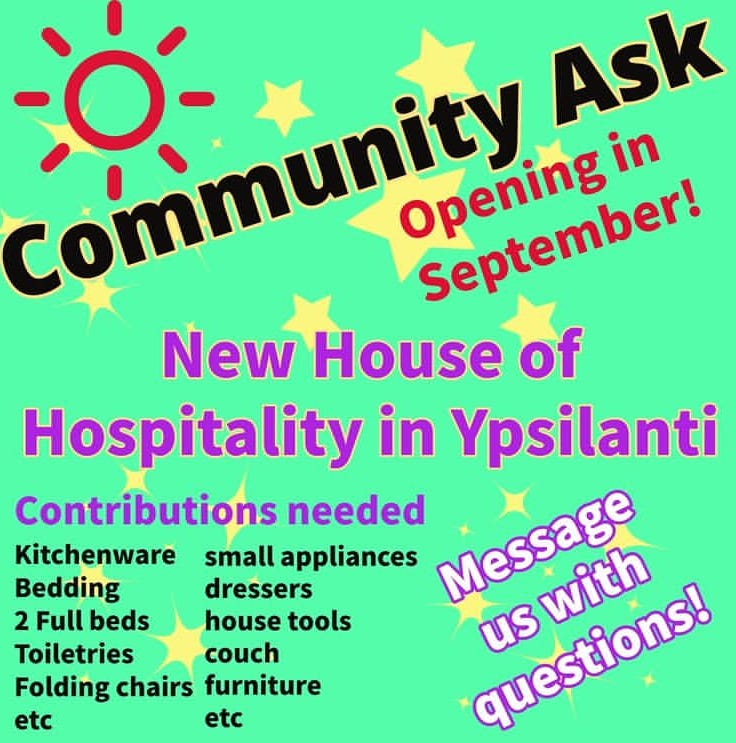
^^^^^^^^^^^^^Send messages to washtenawgdc at gmail dot com^^^^^^^^^^^^^^^^^^
